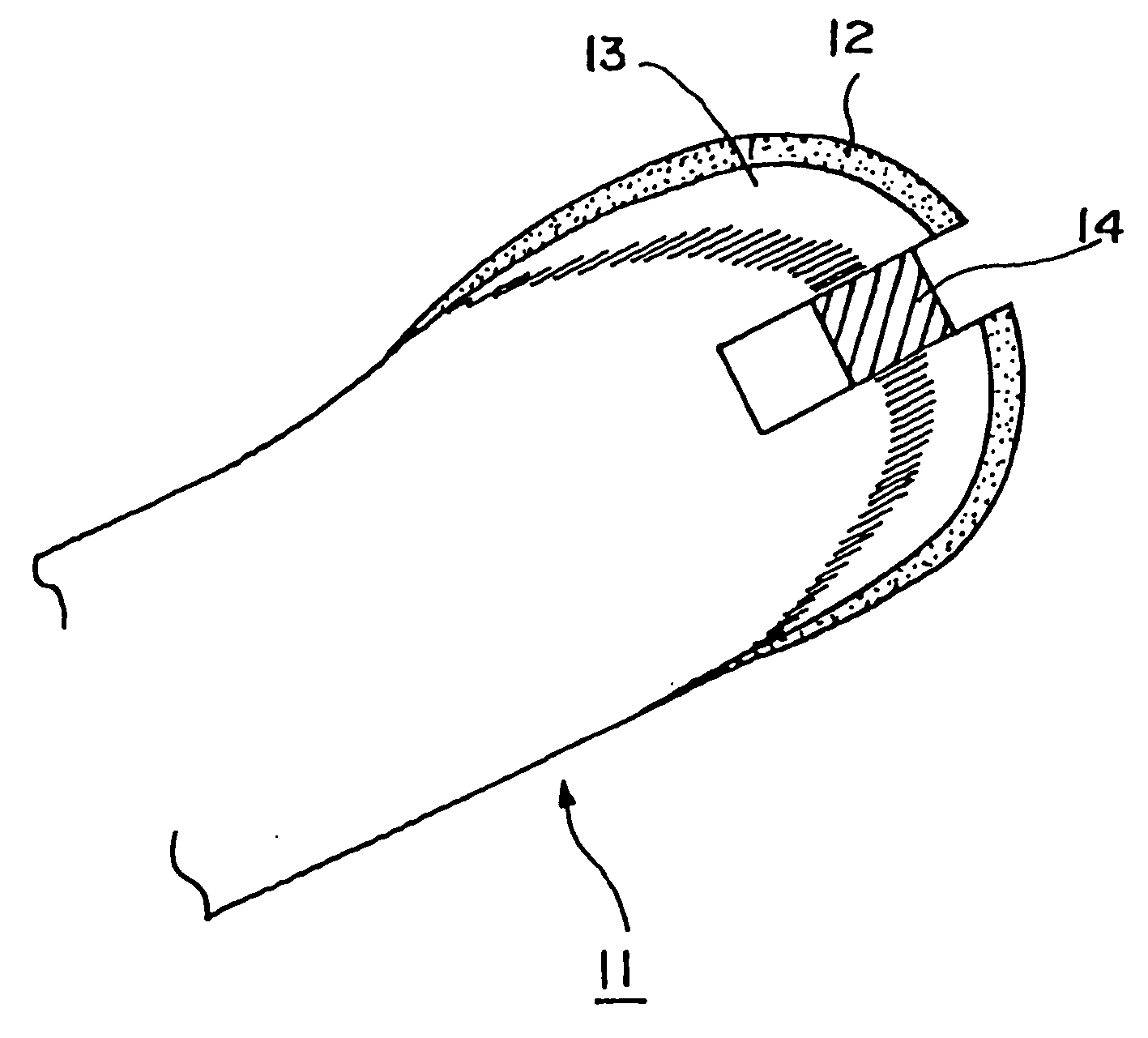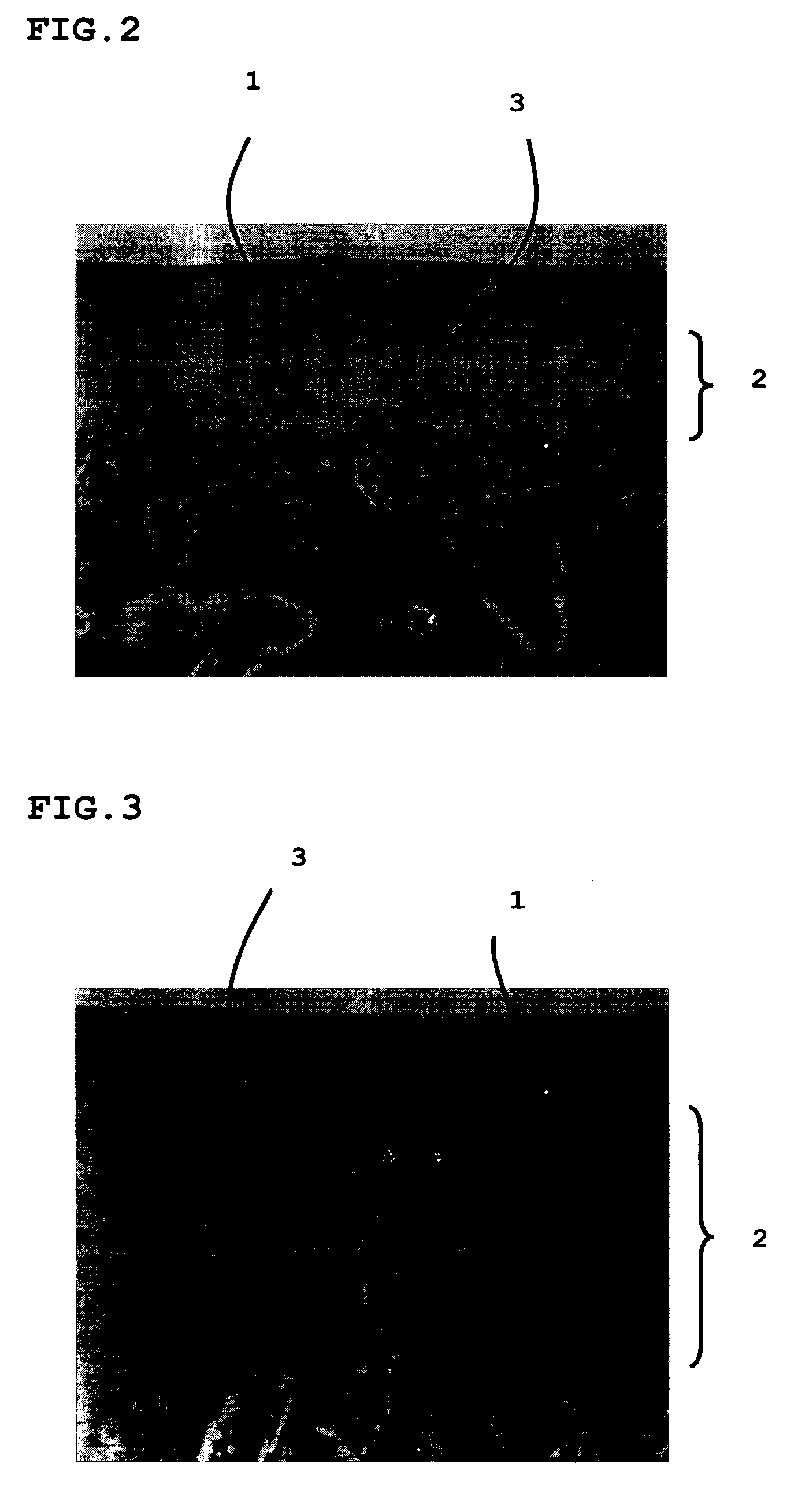Member for regenerating joint cartilage and process for producing the same, method of regenerating joint cartilage and artificial cartilage for transplantation
a joint cartilage and joint cartilage technology, applied in the field of articular cartilage regeneration and production methods, can solve the problems of difficult to maintain conformity to the living body, difficult to regenerate on its own, and great pain, and achieve the effects of convenient production, high strength, and suitable properties
- Summary
- Abstract
- Description
- Claims
- Application Information
AI Technical Summary
Benefits of technology
Problems solved by technology
Method used
Image
Examples
example 1
[0195] 100 Milligrams of PLA-DX-PEG (PLA:DX:PEG=45:17:38 (molar ratio)) comprising a copolymer having a number average molecular weight of 9300 comprising DL-lactide, p-dioxanone and polyethylene glycol, and 20 μg of rhBMP-2 were blended and the resultant material was diluted with acetone to prepare a gel-like mixture.
[0196] This gel-like mixture was infiltrated into a porous element of hydroxyapatite (diameter 4 mm, length 4 mm, porosity 75%, pore diameter 200 μm) and the resulting material was allowed to stand for a while. Subsequently, the acetone was evaporated to form a homogeneous mixture layer of a living body-absorbing member and a bone morphogenetic inductive factor on the pore inner surface of the apatite porous element, thereby obtaining a member for articular cartilage regeneration.
[0197] The member for articular cartilage regeneration thus obtained was buried on the articular face of the femur perforated in the size thereof of a rabbit, and then the joint was put back...
example 2
[0221] A porous element of hydroxyapatite, having a porosity of 75% and a cavity diameter of 200 μm, was produced to thereby prepare a cylindrical element having a diameter of 4 mm and a length of 4 mm.
[0222] A knee joint of a rabbit was cut open, and a perforation which had a diameter of 4 mm and a portion of which reached the depth of the position of a growth cartilage layer 3 was made in the femur articular face, and into the perforation, the resulting porous element was buried such that the surface thereof was 1 mm deeper than the articular cartilage layer, i.e., d=1 mm in FIG. 11. Subsequently, the joint was put back to the origin and further the open portion was sutured to make a movable state.
[0223] The above-described procedure was carried out for 5 rabbits (n=5).
example 3
[0224] A porous element of hydroxyapatite as in Example 2 was produced.
[0225] A knee joint of a rabbit was treated as in Example 2 with the exception that in the perforated depth of this porous element, the surface thereof was 2 mm deeper than the articular cartilage layer, i.e., d=2 mm in FIG. 11.
PUM
| Property | Measurement | Unit |
|---|---|---|
| pore diameter | aaaaa | aaaaa |
| porosity | aaaaa | aaaaa |
| diameter | aaaaa | aaaaa |
Abstract
Description
Claims
Application Information
 Login to View More
Login to View More - R&D
- Intellectual Property
- Life Sciences
- Materials
- Tech Scout
- Unparalleled Data Quality
- Higher Quality Content
- 60% Fewer Hallucinations
Browse by: Latest US Patents, China's latest patents, Technical Efficacy Thesaurus, Application Domain, Technology Topic, Popular Technical Reports.
© 2025 PatSnap. All rights reserved.Legal|Privacy policy|Modern Slavery Act Transparency Statement|Sitemap|About US| Contact US: help@patsnap.com



